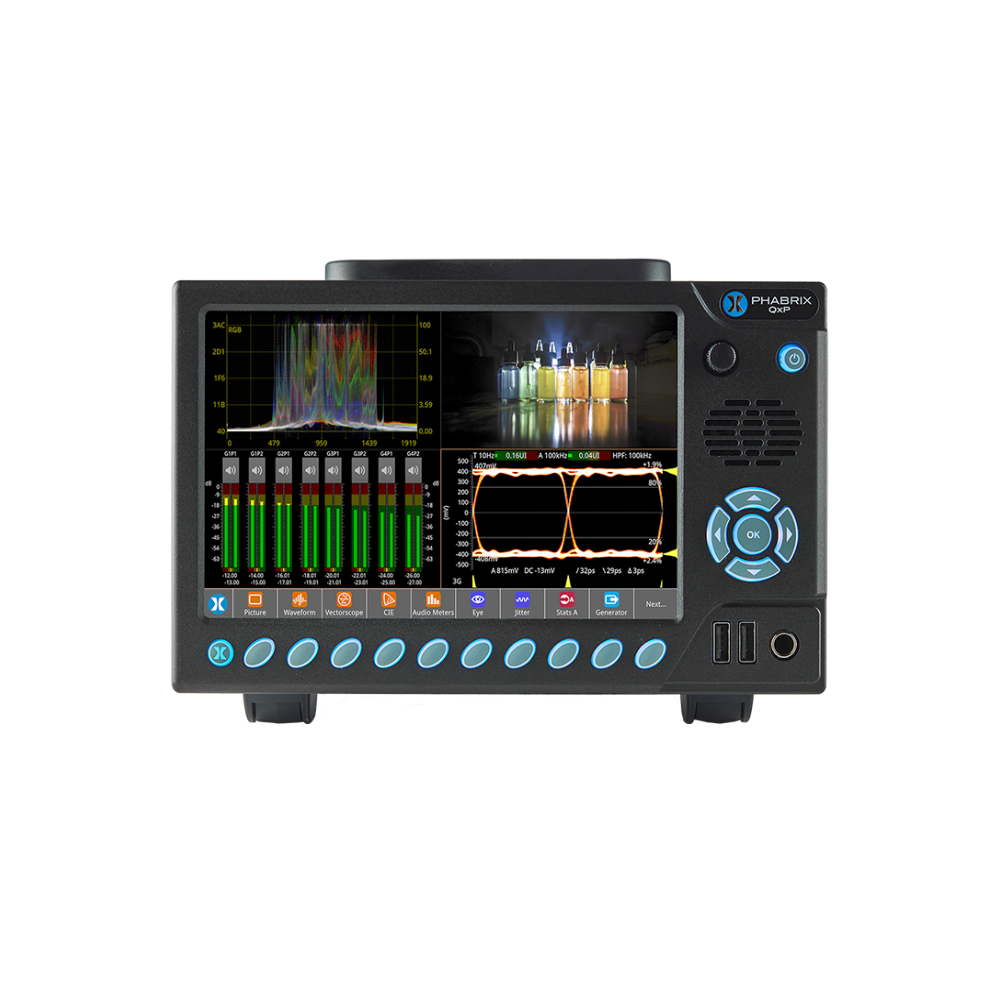FEATURES
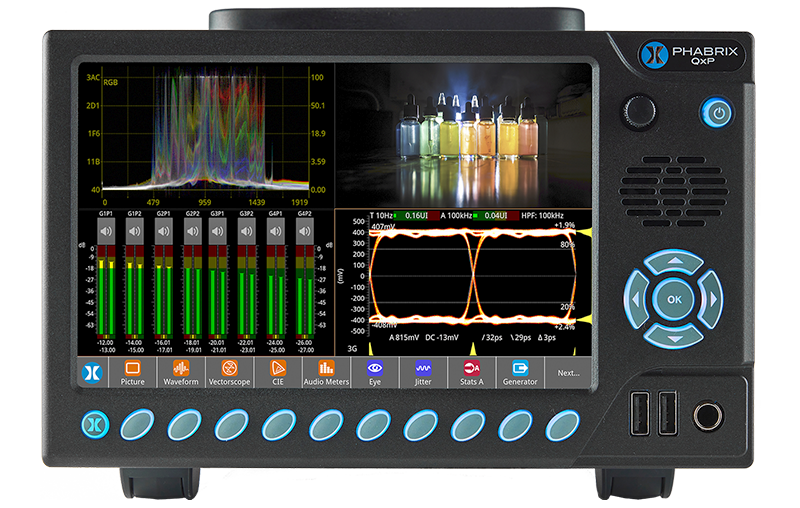
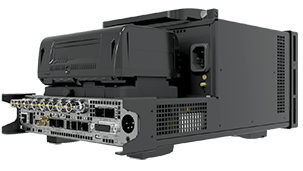
3U instrument with integral 1920 x 1200,
7 inch LCD touch screen
The QxP’s integrated 7 Inch multi-touch LCD display adds a new control layer to the Qx Series. Building on the Qx Series’ innovative app based GUI, users are now able to configure and monitor all of their required instrumentation from the front display, up to 16 Instruments can be configured in various sizes. Plug in an external HDMI monitor and you have the same experience as if you were using the QxP as a conventional Rasterizer.
Class leading Waveform Test and Measurement Monitoring
The QxP comes with PHABRIX’s new class leading Waveform Monitoring with the flexibility to provide high quality traces for both SDR and HDR sources. Combine this with the CIE chart, false color heat map/highlighting, vectorscope, and support for Generation and Analysis of a wide range of SDR and HDR formats in both SDI and ST 2110, the QxP is equally at home in critical Qc, MCR, Grading and Shading Environments
V-mount/G-mount Battery Plate for external battery and portable operation
The QxP is the world’s first portable, 12G-SDI, 25G-ST 2110, combined waveform monitor, generator and analyzer, with support for mains, external DC power and comes with a V-mount or G-mount battery plate as standard, allowing for the unit to be powered by an external camera battery. This makes the QxP ideally suited for On-Set Production, Outside Broadcast, Commissioning, Engineering and R&D environments
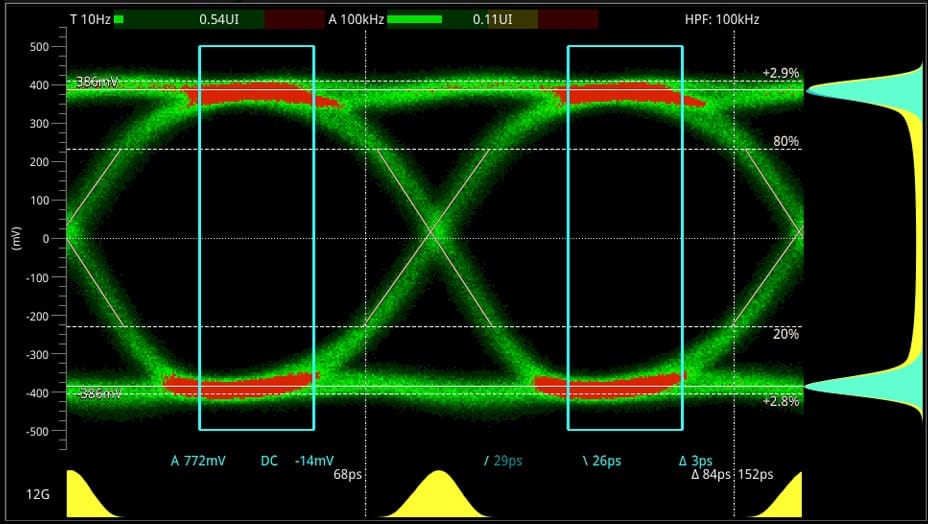
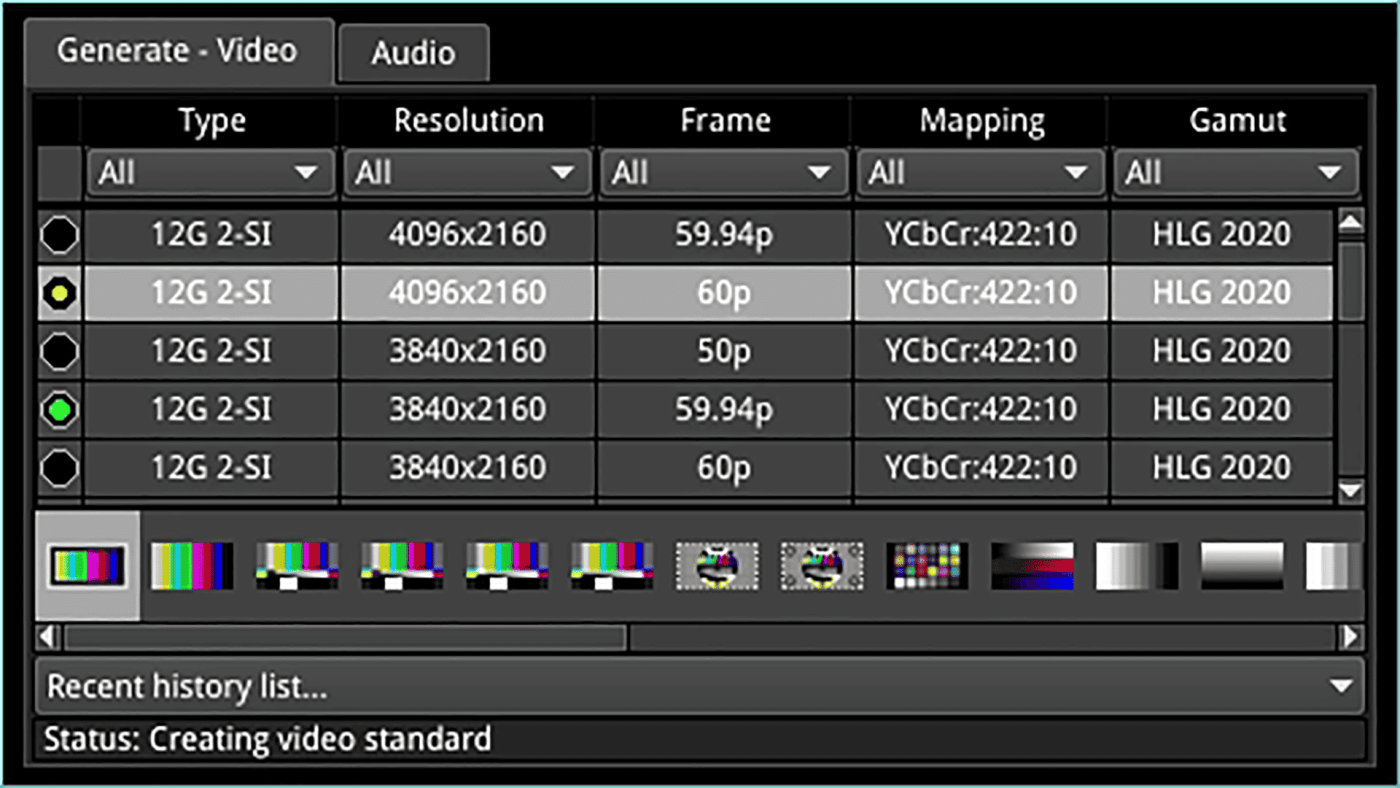
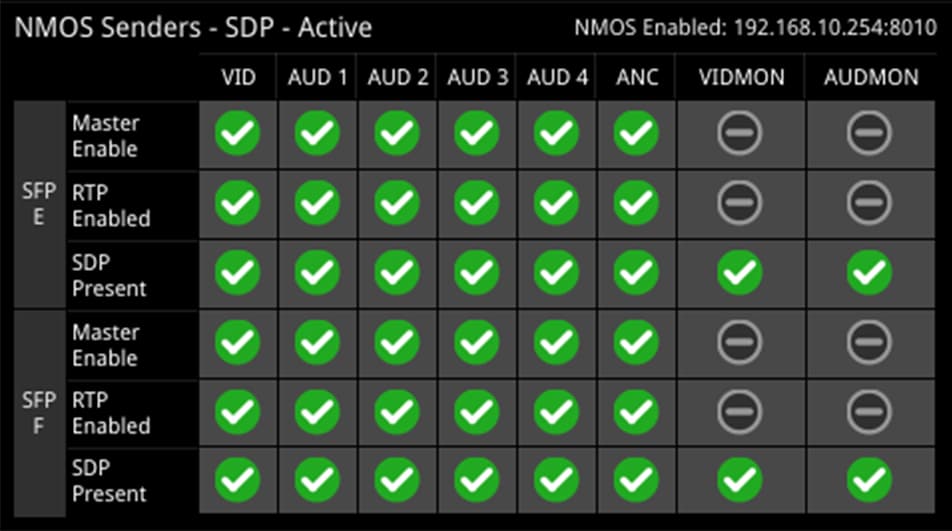
12G-SDI Physical Layer Analysis & Stress
The QxP offers a 12G/6G/3G/HD-SDI physical layer analysis option, including Real-Time Eye technology to instantly highlight any SMPTE compliance issues including eye amplitude, transition times and overshoot. The SDI-STRESS toolset provides both Shorth Mean/Mode, with a histogram overlay and exploration of eye amplitude. PRBS generation and analysis of PRBS-7, 9, 15, 23, 31 allows for deterministic measurement of link Bit Error Rates.
25G-IP/10G-SDI Audio & Video Generation and Analysis
Generate and analyze a comprehensive set of SDR/HDR, YCbCr/RGB, HD/3G/6G/12G SDI and HD/3G/6G/UHD/EUHD IP Formats. The QxP can simultaneously generate and analyse 1x ST 2110-20 video, 4x ST 2110-30/31 audio with up to 80ch and ST 2110-40 ANC ST 2022-7 flows pairs and provide the GUI as a flow (1 x ST 2110-20 and 1 x 2110-30/31 with 2022-7). The SDI pattern-set offers up to 32 channels of embedded audio per link or subfield (up to 128 channels on 12G interfaces) and core full screen SDI Pathological SDI stress patterns as well as allowing the user to define a combination of SDI stress and conventional generator patterns up to full frame
AMWA NMOS Toolset
A suite of AMWA NMOS tools that provide flexibility when integrating with an NMOS controller and associate network Topology. Supported protocols: IS-04 v1.0, 1.1, 1.2, 1.3 IS-05 1.02, 1.1 and IS-09 PTP domain. Provision of both in-band and out-of-band control topologies with manual, mDNS, DNS-SD and DHCP. Senders and Receivers can be independently configured as single or dual NMOS end points.
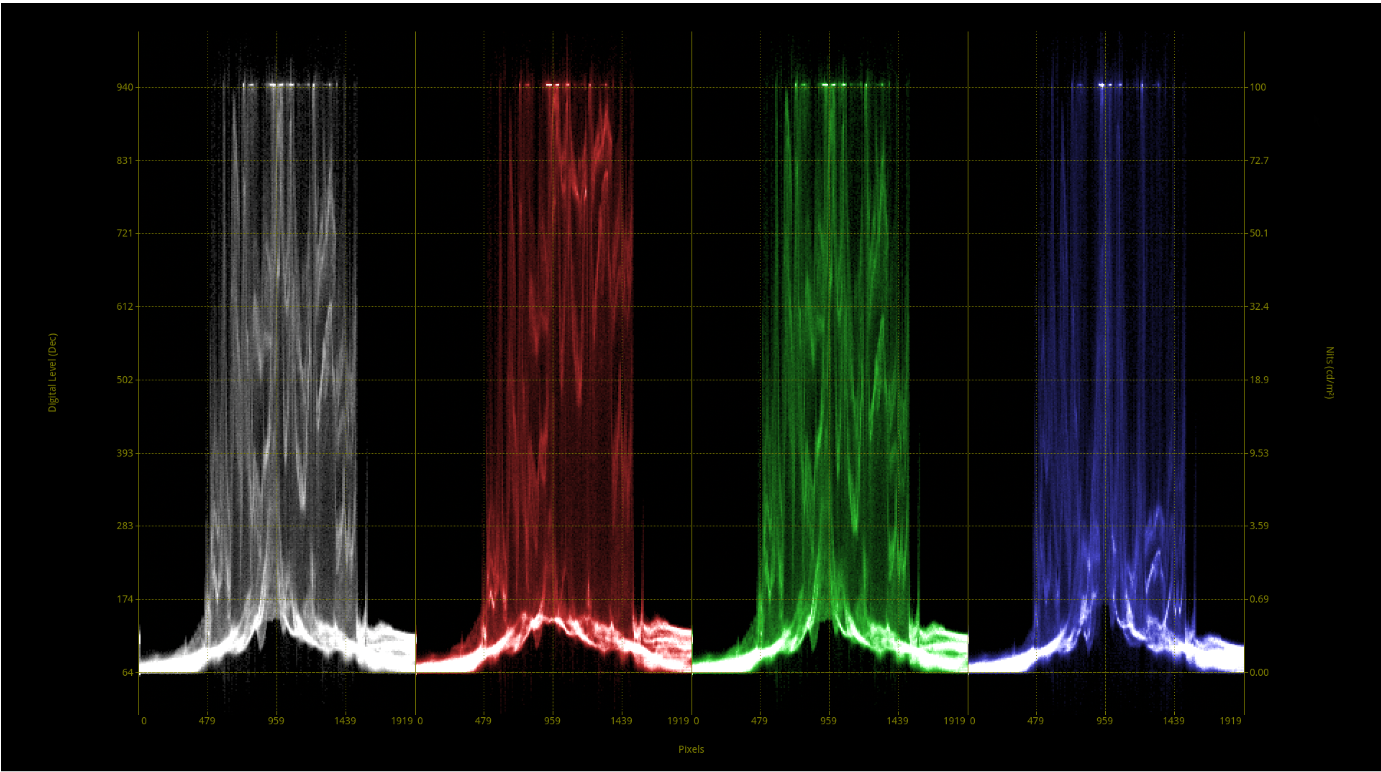
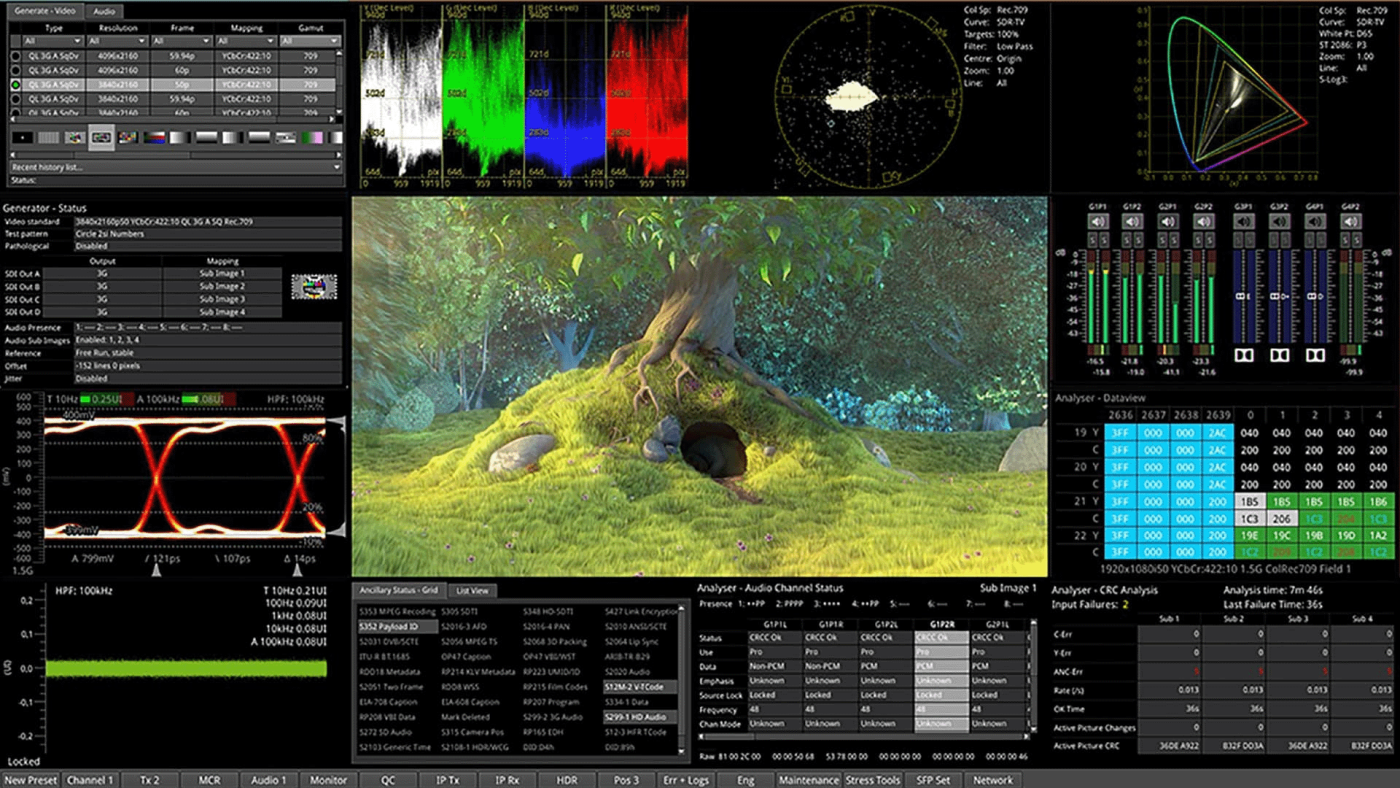
Analysis and Monitoring Toolset
Picture view, waveform, vectorscope, 32 channel audio metering, detection of Dolby formats, ANC status and payload, on screen display of OP47 and CEA-608 in 708 closed captions and Ancillary Time Code (ATC), and advanced control and logging are all provided as standard.
DOLBY® E Decoder & Metadata Analyzer
The Dolby E Decoder and Metadata Analyzer option provides a clear and accessible view of the Dolby E metadata present in a selected Dolby E or ED2 audio stream. It also enables you to check the correct timing of Dolby E packets in the audio signal in an SDI or ST 2022-6 broadcast chain. You can check whether the Dolby E is created correctly and transferred transparently by network equipment such as routers, switchers, satellite links, etc.
User-defined Instrument Layout
Out of the box, the QxP offers external media analysis for broadcast operator HD/3G environments via HDMI, with a flexible user-defined instrument layout displaying up to 16 simultaneous windows, and the ability to rapidly change between bespoke layouts for different operational tasks with user presets. Multiple display layouts can be saved as presets. This allows users to save bespoke layouts for different operational tasks; useful for rapidly changing between different screen layouts eg. Audio, HDR or IP focus.

